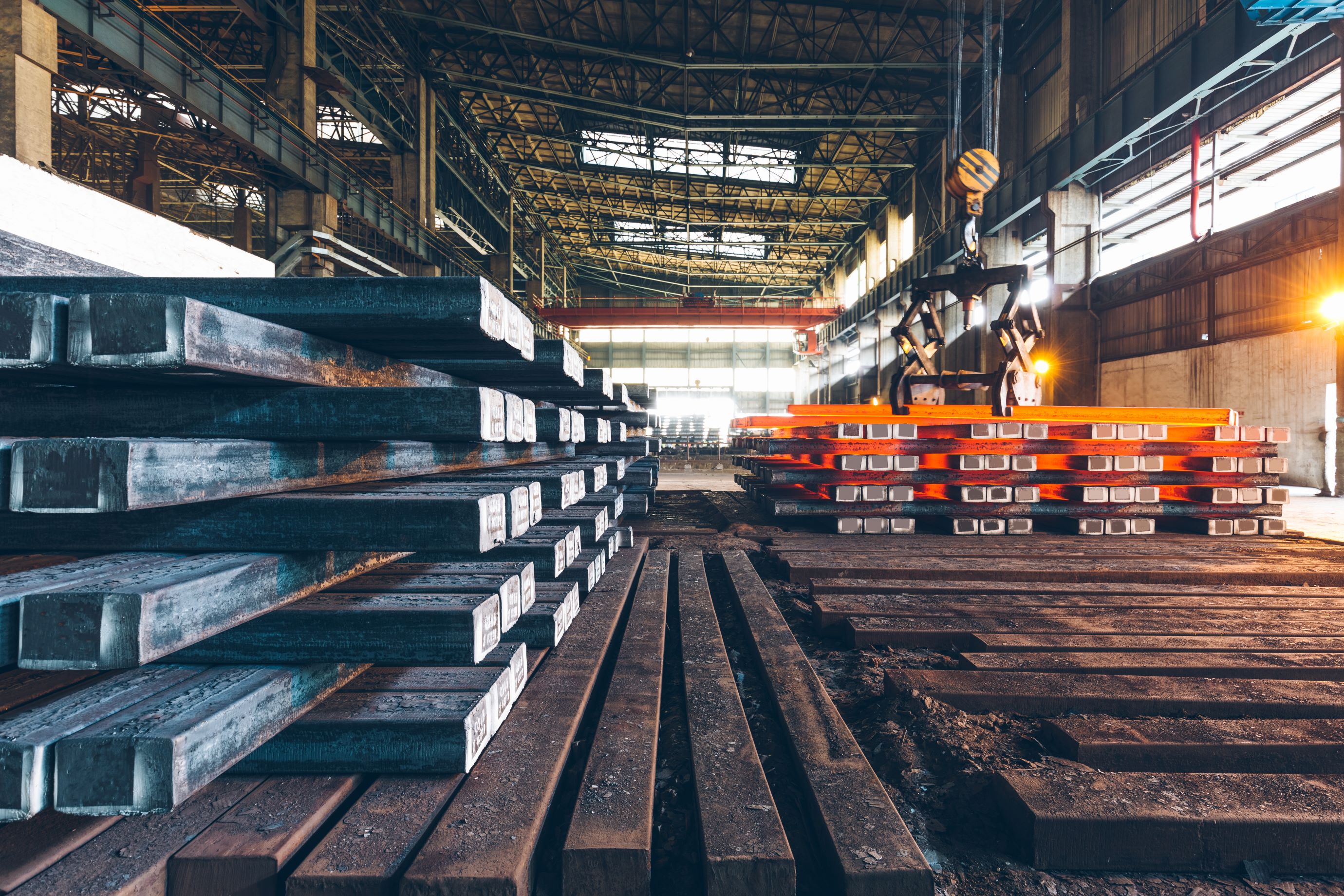
The latest of the IOE&IT’s deep dives into global commodities looks at a long-used and ubiquitous metal: steel.
Steel is essential to many aspects of modern life, as a key component of infrastructure and a crucial material in construction.
According to World Steel, more than half of steel (52%) produced is used in buildings and infrastructure, 12% is used in the automotive sector and 2% in domestic appliances.
New sectors are also emerging – an onshore wind turbine, for example, needs around 300to 600 tonnes of iron and steel.
In today’s sustainably minded world, one of steel’s great assets lies in its infinite recyclability, with no loss of quality.
Steel’s wide use means that it is made all over the world, employing 6 million people directly and supporting 50 million jobs indirectly.
Global steel production has more than tripled over the past 50 years, according to the World Economic Forum (WEF).
China rising
China became the world’s largest steel producer in 1996. It now completely dominates the global market, with its state-supported industry producing more steel than the rest of the world combined.
But all is not well in China as the housing sector, which so much of the construction industry was based on, has slumped due to a liquidity crisis and sliding sales.
Nikkei Asia reports that more than 80% of China’s 500 steel mills ran at a loss last year, citing data from industry information portal, Mysteel.
Analysis from Dutch banking house ING suggested that steel consumption in China fell in March and April compared to last year, a concerning trend for the industry given that that the two months are usually the peak season for purchases.
China has tried to scale back production but its steel price hit a three-year low recently, reports Reuters.
Overcapacity
Although China has traditionally consumed 95% of its own steel output, its vast capacity has meant that competing nations – especially the US – have claimed it is dumping low-price overcapacity on them.
This complaint was behind the Trump administration’s levying of a 25% tariff on Chinese steel imports to try and protect the US steel sector.
The resulting dispute still rumbles on, and the tariff remains in place.
According to Worldsteel, the largest producers of crude steel in million tonnes (Mt) for 2022 were:
China 1,013
India 124.7
Japan 89.2
US 80.7
Russia 71.5
S Korea 65.9
Germany 36.8
Turkey 35.1
Brazil 34
Iran 30.6
China is the world’s biggest exporter of steel as well as its second biggest importer.
The top steel exporting countries (Mt) are:
China 66.2
Japan 33.8
Russia 32.6
S Korea 26.8
Germany 23.9
The top steel importing countries (Mt) are:
US 29.7
China 27.8
Germany 23.3
Italy 20.8
Turkey 16.2
Russian steel
As with other commodities, Russia’s war in Ukraine has affected global trade patterns.
According to GMK Center, in 2022 Russian steel production decreased by 7.2% and steel consumption by 5%.
EU sanctions contained a ban of import of steel products from Russia included in the import quota system (rolled steel and pipes), affecting worth €3.3bn of Russia’s goods.
The UK’s sanctions package included imposing 35% import duties on various goods coming out of Russia and Belarus.
The overall impact was less severe than envisaged but Russian steel still faces a profitably issue due to increased input costs and a reduced international market.
Green steel
Steel production techniques, which have remained unchanged for over a century and a half, rely on fossil fuel-burning furnaces that generate over a tonne of carbon emissions for each tonne of steel created – more than any other industry according to the WEF.
Countries are trying to address this by moving to so called ‘green steel’ that doesn’t use fossil fuels but other forms of energy such as green hydrogen.
Electric arc furnaces (EAF) are another option, replacing traditional blast furnaces, but they are not always powered by renewable sources, and therefore the steel they produce may not always be green.
According to Bloomberg, with Germany racing to achieve carbon neutrality by 2045, the switch to green steel is an early test for heavy industry.
If German steel companies can’t deliver, the country’s car giants such as Mercedes-Benz and BMW will have to turn overseas for their supplies.
Green scrap
Using scrap metal may enable steelmakers to produce higher quality steel grades while cutting carbon emissions, reports SP Global.
The move to sustainable production has also increased demand for scrap, reports Steelnews.
The higher the percentage of scrap, the lower the CO2 emissions and the lower the energy input used for production compared with virgin materials.
China already uses more than 60 million tonnes of scrap per year as a raw material in steel production.
With plans for China to produce 400m tonnes of steel per year via EAFs by 2035, the China Iron and Steel Association has recently initiated a revision of the standards for scrap and futures trading.
Steel costs
Steel prices peaked last year with the energy crisis and inflation fuelling spikes that threatened the viability of construction projects.
Prices, which had been largely stable at around £350 per tonne, were suddenly hitting levels between £500 and £700.
The price of rebar, a staple of construction, soared from £389 per tonne in August 2020 to a peak of £1,202 per tonne on 29 April.
Rebar prices fell back to £859 per tonne in October but were still 77% higher than in January 2019.
Global outlook
The World Steel Association’s Short Range Outlook steel demand forecast for 2023 and 2024 forecasts that this year, demand will see a 2.3% rebound to reach 1,822.3 Mt.
Steel demand is forecast to grow by 1.7% in 2024 to reach 1,854.0 Mt with manufacturing leading the recovery, but high interest rates will continue to weigh on steel demand.
Next year, growth is expected to accelerate in most regions, but deceleration is expected in China.



